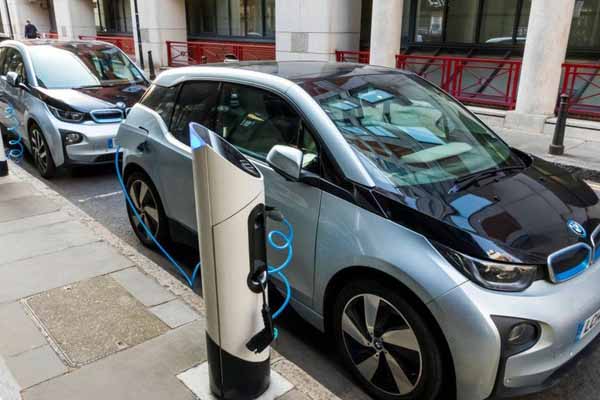Was this a better or worse year for EVs? Why?
2022 was the beginning of the steep part of the adoption curve for EVs. New sales in 2022 (~1.2M) will be equivalent to what sold in total between 2017 and 2020 (4 years worth). Plus, the used EV market got to scale for the first time, at 300K transactions, largely as a result of the 4-year anniversary of the Tesla Model 3, that’s predictably now flooding the used market.
What are 3 things that you’re keeping an eye on for next year? Why?
1.Tesla market share of new EV sales (BEV + PHEV) drops under 40% for the first time since 2017. They’re selling more cars than ever, in fact, the Model Y becomes the most popular car in the world, displacing the Toyota Camry. But there are so many other players in the EV market that are scaling up volume, Tesla becomes just another car brand.
2. There are now over a million EVs on the road that are out of their 8-year battery warranty (everything up to MY 2015) or within 3 years of the end of battery warranty coverage (up to MY 2018). An out-of-warranty battery replacement on an older car is unusual but devastating given the cost (link to our article) and relative value of the vehicle at that point. Anyone purchasing a used EV that’s within 3 years of the end of its battery warranty will want to ensure they’ve got visibility on how that car’s battery is aging.
3. The beginning of the end of combustion engine vehicles is subtle. Over the next year, we’ll see an increase in the rate of ICE vehicle leasing (vs. outright purchasing), as the fear of trying to resell an ICE car in 5-7 years starts to creep into new car buyers’ minds. No one wants to be the last person to be selling an ICE car when there’s no one buying.
What is something that is currently being hyped as the next big thing but won’t turn out as many expect it to? Why?
There are a lot of companies building out huge charging networks. Many of the existing locations (random dark parking lots that are unsafe after dark) and charging speeds (L2 and slow DC fast charging) are not going to make economic sense. Over the next year, we’ll begin to see vast differences in utilization rates of different charging options, as EV drivers form habits that work for their daily lives. Public L2 charging (free or paid) that made sense in urban areas for the early EVs with smaller batteries and lower range will fall out of favor compared to ultra-fast L3 charging near highways on the outskirts of cities.
What should we expect from EV innovation next year? What will it mean for the industry?
Less focus on increasing range in big chunks now that most EVs have a 250 – 275 mile range. More focus on reducing range variability in cold weather and on faster DC recharging. Will continue to mean innovation in battery tech and efficiency, which will mean figuring out how batteries age becomes even more complicated because the variables will increase.
What trends should dealers be most aware of, whether it’s good or bad? Why?
Since the used EV tax credit requires that a vehicle be sold by a dealer to qualify for the $4000 credit, there’s a new advantage over private party sales. Traditionally, just 55% of used car sales go through dealers. That % could be as high as 70% moving forward for used electric vehicles. This grows the market long-term for dealers
What can consumers expect in terms of prices for EVs and how to shop for either a used or new car in the next year? Will this be good or bad for them?
For New EVs:
The renewed $7500 tax credit for new EVs means that qualifying new EVs continue to be a great deal (as long as they meet the assembly and sourcing requirements that weren’t there before). But the biggest impact they’ll have on Jan 1 is that the two manufacturers that hit their 200K production caps already (Tesla and GM) will get huge wind in their sails. The new Chevy Bolt will be an unbelievable deal, priced around $25K new with a $7500 tax credit!?!?!
For Used EVs:
The return of tax credit eligibility for new Tesla and GM vehicles will also cause an immediate drop in price for used Tesla and GM EVs. (The reason this happens is that for a buyer who can choose from a new and used version of the same model, and the new model drops by $7500, the used version looks a lot less attractive unless it drops by about the same amount.) That lower price point should make used Teslas and GMs much more accessible to more folks.
The other big story is the used tax credit — $4000 on a used EV sold below $25,000, subject to a bunch of other qualifications (link to our used credit page). This credit will apply to pretty much any appropriately priced battery electric or plug-in hybrid, and it really changes the payback period on EV vs. gasoline for these lower-priced cars (link to or include the payback graphic).
While the new EV of the year for 2023 is (finally) going to be the F-150 Lightning… the used EV car of the year for 2023 — my prediction — the used Chevy Bolt. Currently listed between $20K – $30K used, and with brand new batteries that are higher capacity than they had originally, I suspect the effective purchase price (after used tax credit) for an income-qualified buyer of a 2017 – 2019 Bolt is going to be in the neighborhood of $15,000 by early next year.















